Private Jet Hire: A Luxurious and Convenient Travel Option

Private jet hire offers a unique and unparalleled travel experience, transcending the limitations of commercial flights. Imagine soaring through the skies in personalized comfort, bypassing crowded terminals and security lines, and enjoying the ultimate in privacy and flexibility. This is the world of private jet travel, where every detail is tailored to your needs, and every journey becomes an unforgettable adventure.
The allure of private jet hire lies in its ability to transform travel into a seamless and luxurious experience. From the moment you step aboard, you’re enveloped in an atmosphere of exclusivity and personalized service. Whether you’re a seasoned business traveler seeking efficiency or a discerning leisure traveler seeking ultimate comfort, private jet hire caters to your specific needs and desires.
Introduction to Private Jet Hire
Private jet hire, also known as chartering a private jet, involves renting a private aircraft for personal or business travel. This mode of transportation offers a distinct level of exclusivity, flexibility, and comfort compared to commercial airlines. Private jet travel has evolved significantly over the years.
Initially, it was primarily accessible to the ultra-wealthy, but advancements in technology, increased demand, and innovative business models have made private jet hire more accessible to a wider range of individuals and businesses. The allure of private jet hire lies in its unparalleled convenience and personalized experience.
It offers a range of benefits that cater to discerning travelers seeking a seamless and stress-free journey.
Benefits of Private Jet Hire
Private jet hire provides a multitude of advantages that elevate the travel experience to new heights.
- Time Savings: Private jet travel eliminates the need to navigate crowded airports and adhere to rigid airline schedules. Passengers can fly directly to their destination, saving valuable time and maximizing productivity.
- Convenience and Flexibility: Private jet hire offers unparalleled flexibility. Travelers can choose their departure and arrival times, customize their itinerary, and avoid the hassles of baggage claim and security lines.
- Privacy and Exclusivity: Private jet hire provides a sanctuary of privacy and exclusivity. Passengers enjoy a personalized experience, free from distractions and the noise of commercial flights.
- Enhanced Comfort and Amenities: Private jets offer spacious cabins, luxurious seating, and amenities tailored to individual preferences. Passengers can relax in comfort and enjoy personalized services, such as gourmet meals and in-flight entertainment.
- Increased Safety and Security: Private jet operators prioritize safety and security. Aircraft undergo rigorous maintenance and safety checks, and passengers benefit from personalized security protocols and access to private terminals.
Benefits of Private Jet Hire

Private jet hire offers a range of advantages that can significantly enhance your travel experience. From convenience and time-saving to enhanced privacy and flexibility, private jets provide a level of comfort and luxury unmatched by commercial airlines.
Convenience and Time-Saving
Private jet travel offers significant time-saving benefits compared to commercial flights. This is primarily due to the ability to bypass the long queues and security checks associated with commercial airports. Private jet passengers have access to dedicated terminals and expedited security procedures, significantly reducing the overall time spent at the airport.
- Direct Flights: Private jets can fly directly to smaller airports, eliminating the need for connecting flights and minimizing travel time. This allows for a more efficient and seamless travel experience.
- Flexible Scheduling: Private jet hire offers unparalleled flexibility in scheduling. You can choose your departure and arrival times, allowing you to maximize your time and optimize your travel plans.
Enhanced Privacy and Security, Private jet hire
Private jets provide a secure and private travel environment. Unlike commercial flights, private jets offer a controlled and exclusive space, ensuring privacy and security throughout your journey.
- Exclusive Access: Private jet terminals and lounges offer a more discreet and exclusive environment, reducing the risk of unwanted encounters or intrusions.
- Controlled Environment: Private jets provide a controlled environment, allowing you to travel with your companions and belongings in a secure and private setting.
Flexibility and Customization
Private jet hire provides a level of flexibility and customization that is not available with commercial airlines. This allows you to tailor your travel experience to meet your specific needs and preferences.
- Choice of Aircraft: Private jet hire offers a wide range of aircraft options, from small jets for short-haul flights to larger jets for long-distance travel. This allows you to select the aircraft that best suits your travel requirements and budget.
- Customized Itinerary: Private jet hire allows you to customize your itinerary, including stops and destinations. You can create a travel plan that aligns with your specific needs and interests.
Comfort and Luxury
Private jets offer a level of comfort and luxury that surpasses the standard of commercial airlines. This includes spacious cabins, comfortable seating, and access to amenities that enhance your travel experience.
- Spacious Cabins: Private jets feature spacious cabins with comfortable seating arrangements, providing ample legroom and space to relax and work.
- Luxury Amenities: Private jets often come equipped with amenities such as Wi-Fi, entertainment systems, and private bathrooms, creating a luxurious and comfortable travel experience.
Types of Private Jets Available for Hire
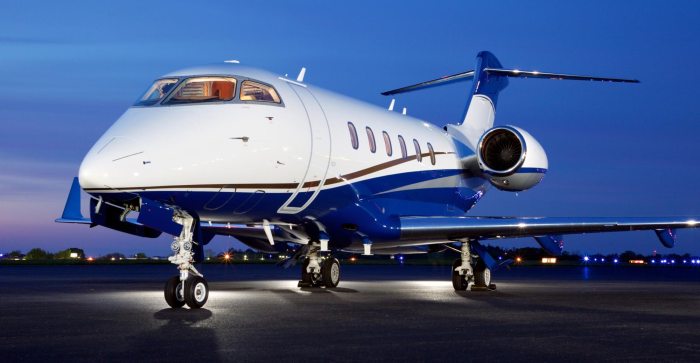
Private jet hire offers a wide range of aircraft options to cater to various travel needs and budgets. Understanding the different types of private jets available for hire is crucial for making an informed decision.
Classifying Private Jets by Size and Capacity
Private jets are categorized based on their size and passenger capacity, which directly influences their features, capabilities, and operating costs. Here’s a breakdown of common categories:
- Very Light Jets (VLJs ): These are the smallest private jets, typically accommodating 4-6 passengers. They are known for their affordability, fuel efficiency, and ability to operate from smaller airports. Popular examples include the Embraer Phenom 100 and the Cessna Citation Mustang.
- Light Jets (LJs): Light jets offer slightly more space and range than VLJs, typically seating 6-8 passengers. They are often used for short-haul flights and are suitable for business travelers or small groups. Examples include the Cessna Citation CJ3 and the Embraer Legacy 450.
- Mid-Size Jets (MSJs): Mid-size jets provide a balance of comfort and capacity, accommodating 8-10 passengers. They offer r greater range and amenities than light jets, making them suitable for both domestic and international travel. Popular models include the Hawker 4000 and the Gulfstream G280.
- Super Mid-Size Jets (SMSJs): Super mid-size jets are larger than mid-size jets, seating 10-12 passengers. They feature spacious cabins, advanced avionics, and long-range capabilities. Examples include the Gulfstream G450 and the Bombardier Challenger 350.
- Large Jets (LJs): Large jets offer luxurious interiors, expansive cabins, and the ability to accommodate 12-16 passengers. They are ideal for long-haul flights and are often used by corporations and high-net-worth individuals. Popular examples include the Boeing Business Jet (BBJ) and the Airbus ACJ319.
- Ultra-Long Range Jets (ULRs): Ultra-long range jets are the largest and most luxurious private jets, seating 16-19 passengers. They offer unparalleled comfort, advanced amenities, and the ability to fly non-stop across continents. Examples include the Gulfstream G650ER and the Bombardier Global 7500.
Features and Capabilities of Different Private Jet Types
The size and capacity of a private jet directly impact its features and capabilities.
- Very Light Jets (VLJs ): VLJs are known for their fuel efficiency and ability to operate from smaller airports, making them ideal for short-haul flights and regional travel. They typically have a range of around 1,000 nautical miles and a cruising speed of 400 mph.
- Light Jets (LJs): Light jets offer a slightly larger cabin and longer range than VLJs, typically reaching around 1,500 nautical miles. They feature comfortable seating, basic amenities, and a cruising speed of 450 mph.
- Mid-Size Jets (MSJs): Mid-size jets provide a balance of comfort, capacity, and range, typically reaching 2,500 nautical miles. They feature spacious cabins, comfortable seating, and a wide range of amenities. They also have a higher cruising speed of 500 mph.
- Super Mid-Size Jets (SMSJs ): Super mid-size jets offer even more space and comfort than mid-size jets, with a typical range of 3,500 nautical miles. They feature luxurious interiors, advanced avionics, and a cruising speed of 550 mph.
- Large Jets (LJs): Large jets provide the ultimate in luxury and comfort, with spacious cabins, advanced amenities, and a range of 4,000 nautical miles or more. They also have a higher cruising speed of 600 mph.
- Ultra-Long Range Jets (ULRs): Ultra-long-range jets are the pinnacle of private aviation, offering unparalleled comfort, range, and speed. They typically have a range of 6,000 nautical miles or more and a cruising speed of 650 mph.
Examples of Popular Private Jet Models
Here are some examples of popular private jet models for various purposes:
- For short-haul flights and regional travel: Cessna Citation Mustang, Embraer Phenom 100
- For business travel and small groups: Cessna Citation CJ3, Embraer Legacy 450
- For domestic and international travel l: Hawker 4000, Gulfstream G280
- For long-haul flights and corporate travel: Gulfstream G450, Bombardier Challenger 350
- For luxury travel and high-net-worth individuals: Boeing Business Jet (BBJ), Airbus ACJ319
- For transcontinental flights and global travel: Gulfstream G650ER, Bombardier Global 7500
Key Characteristics of Different Private Jet Types
The following table summarizes the key characteristics of different private jet types:
| Type | Passenger Capacity | Range (Nautical Miles) | Cruising Speed (mph) | Features | Examples |
|---|---|---|---|---|---|
| Very Light Jets (VLJs) | 4-6 | 1,000 | 400 | Fuel efficient, operate from smaller airports | Cessna Citation Mustang, Embraer Phenom 100 |
| Light Jets (LJs) | 6-8 | 1,500 | 450 | Comfortable seating, basic amenities | Cessna Citation CJ3, Embraer Legacy 450 |
| Mid-Size Jets (MSJs) | 8-10 | 2,500 | 500 | Spacious cabins, comfortable seating, a wide range of amenities | Hawker 4000, Gulfstream G280 |
| Super Mid-Size Jets (SMSJs) | 10-12 | 3,500 | 550 | Luxurious interiors, advanced avionics | Gulfstream G450, Bombardier Challenger 350 |
| Large Jets (LJs) | 12-16 | 4,000+ | 600 | Spacious cabins, advanced amenities, long-range capabilities | Boeing Business Jet (BBJ), Airbus ACJ319 |
| Ultra-Long Range Jets (ULRs) | 16-19 | 6,000+ | 650 | Unparalleled comfort, advanced amenities, transcontinental capabilities | Gulfstream G650ER, Bombardier Global 7500 |
The Private Jet Hire Process
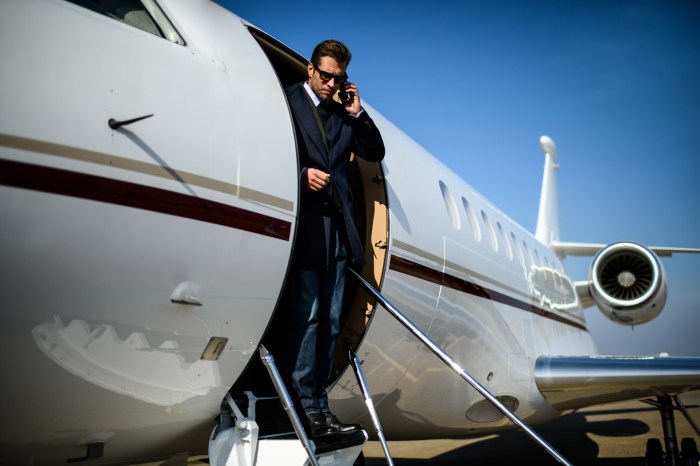
Hiring a private jet can seem daunting, but it’s a streamlined process when you understand the steps involved. From initial contact to take-off, the process is designed to ensure a smooth and personalized experience.
Factors to Consider When Choosing a Private Jet Charter Company
Selecting the right charter company is crucial for a successful private jet experience. Several factors come into play, ensuring a seamless and enjoyable journey.
- Reputation and Experience: Research the company’s track record, client testimonials, and industry standing. Choose a reputable company with a proven history of safe and efficient operations.
- Aircraft Fleet and Availability: Consider the types of aircraft available, their size, and the company’s ability to accommodate your specific needs and flight schedule.
- Pricing and Transparency: Request detailed quotes, including aliases. Ensure the company provides transparent pricing and clear explanations of any additional costs.
- Customer Service and Support: Evaluate the company’s commitment to customer service. Look for responsive and helpful staff who are available 24/7 to address any concerns or requests.
- Safety Standards and Certifications: Verify the company’s adherence to industry safety standards and certifications. Choose a company with a strong safety record and a commitment to maintaining high operational standards.
Booking a Flight and Obtaining Necessary Permits
Once you’ve chosen a charter company, the booking process begins.
- Flight Itinerary and Detail: Provide the charter company with your desired departure and arrival airports, flight dates and times, and the number of passengers. This information allows them to find the most suitable aircraft and ensure availability.
- Flight Permitting and Handling: The charter company will handle all necessary flight permits and arrangements, including airport slots, customs clearance, and ground handling. They will coordinate with the relevant authorities to ensure a smooth and compliant flight.
- Payment and Confirmation: The charter company will provide a detailed quote, including all fees. Once you confirm the booking, you will be required to make a deposit or full payment according to the company’s terms and conditions.
Step-by-Step Guide for First-Time Private Jet Hirers
For first-time private jet hirers, the process can feel overwhelming. Here’s a step-by-step guide to help you navigate the process with confidence:
- Define Your Travel Needs: Determine your desired destinations, travel dates, and the number of passengers. This information will help you narrow down your search for suitable aircraft and charter companies.
- Research and Compare Charter Companies: Explore different charter companies, comparing their services, aircraft fleets, pricing, and customer reviews. Focus on companies with a strong reputation, a diverse fleet, and excellent customer support.
- Request Quotes and Compare Options: Contact multiple charter companies to request quotes for your desired flight. Compare their pricing, aircraft options, and additional services to find the best value for your needs.
- Choose a Charter Company and Book Your Flight: Once you’ve chosen a charter company, provide them with your flight details and confirm your booking. Ensure you understand the terms and conditions, including payment arrangements and cancellation policies.
- Prepare for Your Flight: Gather your travel documents, including passports, visas, and any other required documentation. The charter company will provide you with a pre-flight briefing, including details about your aircraft, boarding procedures, and any specific requirements.
Costs Associated with Private Jet Hire
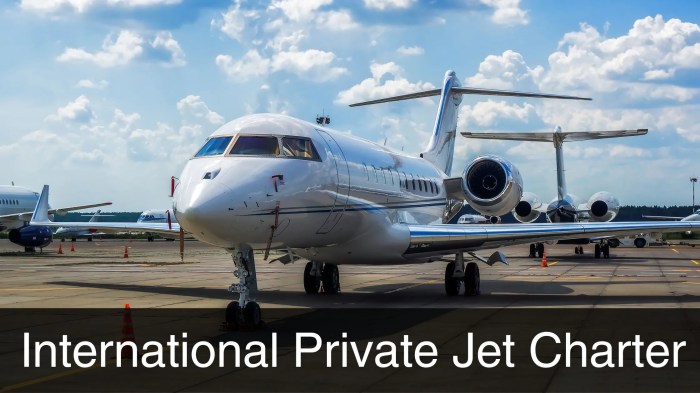
Private jet hire offers unparalleled convenience and luxury, but it comes at a cost. Understanding the factors that influence pricing and the different pricing models employed by private jet charter services is crucial for making informed decisions.
Factors Influencing Private Jet Hire Costs
Several factors determine the cost of private jet hire, including:
- Aircraft Type and Size: The size and type of aircraft you choose significantly impact the cost. Larger jets with more amenities and capacity will be more expensive than smaller, more basic models.
- Flight Distance and Duration Longer flights naturally require more fuel and crew time, increasing the cost.
- Route Complexity: Flights with multiple stops, complex routes, or landings at smaller, less-traveled airports can add to the cost.
- Time of Year and Day: Peak travel seasons, such as holidays and weekends, typically have higher demand, resulting in higher prices.
- Additional Services: Catering, ground transportation, in-flight entertainment, and other customized services can increase the overall cost.
Private Jet Charter Pricing Models
Private jet charter services utilize various pricing models:
- Hourly Rate: This model charges a fixed hourly rate for the aircraft’s use, with additional fees for fuel, landing fees, and other expenses. The hourly rate can vary depending on the aircraft type, size, and operator.
- Flat Fee: This model charges a fixed price for a specific route, regardless of the flight duration. This option is often used for pre-planned trips or frequently traveled routes.
- Empty Leg Flights: These flights are offered at discounted rates because the aircraft is returning to its base empty. This can be a cost-effective option for last-minute bookings.
Examples of Typical Costs for Private Jet Flights
To illustrate the cost range, here are some examples of typical costs for different types of private jet flights:
- Short-haul flights (under 50milese A one-way flight on a light jet (e.g., Cessna Citation CJ3) could cost around $3,000 – $5,000.
- Medium-haul flights (500- 1,500 miles): A one-way flight on a mid-size jet (e.g., Embraer Legacy 600) could cost around $8,000 – $15,000.
- Long-haul flights (over 1,500 miles ): A one-way flight on a large-cabin jet (e.g., Gulfstream G550) could cost around $20,000 – $40,000.
Private Jet Hire vs. Commercial Flights
Here is a table comparing the typical costs of private jet hire with commercial flights for a round-trip journey between New York City and Los Angeles:
| Flight Type | Estimated Cost | Advantages | Disadvantages |
|---|---|---|---|
| Private Jet (Light Jet) | $30,000
|
Convenience, privacy, flexibility, personalized service | Higher cost, limited availability |
| Commercial Flight (Economy Class) | $500
|
Lower cost, wide availability | Crowded environment, limited flexibility, security checks |
Safety and Security in Private Jet Travel
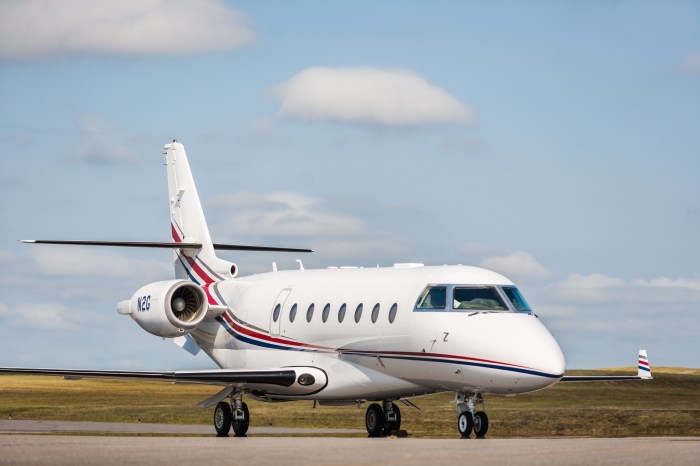
When choosing private jet travel, safety and security are paramount considerations. The industry is meticulously regulated, and stringent measures are in place to ensure a safe and secure journey for passengers.
Rigorous Safety Standards and Regulations
Private jet operations are subject to a comprehensive set of safety regulations and oversight from aviation authorities. These regulations encompass various aspects, including aircraft maintenance, pilot training, and flight operations. For example, the Federal Aviation Administration (FAA) in the United States sets strict standards for private jet operators, including regular inspections, pilot certifications, and operational procedures.
These regulations ensure that private jets meet the highest safety standards.
Security Measures at Airports and During Flights
Security measures are implemented at private jet terminals and during flights to protect passengers and aircraft. These measures include:
- Pre-flight Security Screening: Passengers and their belongings undergo thorough security screening at private jet terminals, similar to commercial airports, to prevent unauthorized items from entering the aircraft.
- Restricted Access: Private jet terminals typically have restricted access, limiting entry to authorized personnel and passengers. This helps to control the flow of people and minimize security risks.
- Enhanced Security Protocol: Private jet operators often implement enhanced security protocols, such as background checks for crew members, advanced baggage screening, and security measures specific to the flight’s destination.
Role of Experienced Pilots and Crew
Experienced pilots and crew members play a vital role in ensuring the safety and security of private jet travel. They are highly trained professionals with extensive experience in operating aircraft and handling emergencies. They are responsible for:
- Flight Planning and Execution: Pilots are responsible for planning and executing safe flight operations, considering weather conditions, air traffic control, and other factors.
- Emergency Response: Pilots and crew members are trained to handle emergencies effectively, ensuring the safety of passengers and the aircraft. They are equipped with the knowledge and skills to respond to various situations, including medical emergencies, mechanical failures, and unexpected weather events.
- Passenger Safety and Comfort: Crew members are responsible for ensuring the safety and comfort of passengers during the flight. They provide assistance with boarding and disembarking, attend to passenger needs, and maintain a safe and secure environment within the aircraft.
Insurance and Liability Considerations
Private jet hire typically involves insurance coverage to protect both the aircraft owner and the passengers. Insurance policies cover various risks, including:
- Aircraft Damage or Loss: Insurance policies cover the cost of repairing or replacing the aircraft in case of damage or loss due to accidents, weather events, or other unforeseen circumstances.
- Passenger Liability: Insurance policies provide coverage for passenger injuries or fatalities that may occur during the flight.
- Third-Party Liability: Insurance policies also cover liability for damage or injury to third parties, such as property damage or personal injuries caused by the aircraft.
The Future of Private Jet Hire
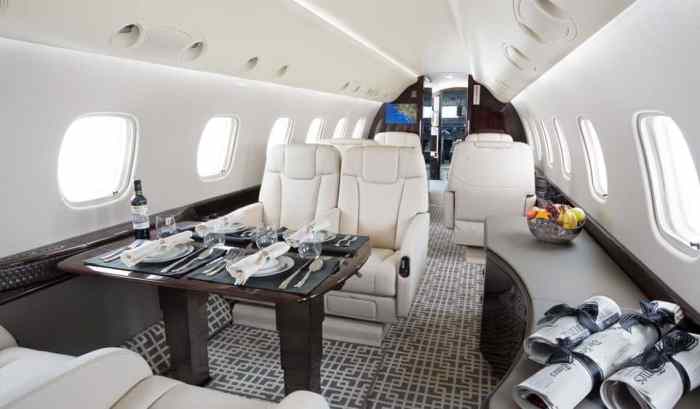
The world of private jet travel is evolving rapidly, driven by technological advancements, changing consumer preferences, and a growing focus on sustainability. The future of private jet hire promises a more accessible, efficient, and environmentally conscious experience.
Emerging Trends and Advancements in Private Jet Technology
Technological advancements are shaping the future of private jet travel, offering a range of benefits for both passengers and operators.
- Advanced avionics and automation: Next-generation aircraft are incorporating advanced avionics systems that enhance safety, efficiency, and comfort. Automation is playing a significant role, enabling smoother takeoffs and landings, reducing pilot workload, and optimizing fuel consumption. For example, the Gulfstream G700 features a state-of-the-art flight deck with advanced automation capabilities, enhancing safety and reducing pilot fatigue.
- Sustainable aviation fuels: The industry is actively exploring and developing sustainable aviation fuels (SAFs) to reduce carbon emissions. These fuels, derived from renewable sources, are crucial for achieving a more sustainable future for private aviation. Several airlines and aircraft manufacturers are investing in SAF research and development.For instance, Virgin Atlantic has committed to using SAFs in its operations, aiming to reduce its carbon footprint.
- Connectivity and entertainment: Private jets are increasingly equipped with high-speed internet connectivity, allowing passengers to stay connected during flights. Advanced entertainment systems offer a wide range of movies, music, and games, enhancing the in-flight experience. The Bombardier Global 7500 boasts a state-of-the-art entertainment system with high-definition screens and a wide selection of content, providing passengers with a luxurious and immersive experience.
Ending Remarks
Private jet hire offers a transformative travel experience, merging convenience, luxury, and personalized service into a seamless journey. Whether you’re seeking efficiency for business travel, ultimate comfort for leisure, or simply a desire for a more personalized and private travel experience, private jet hire presents a compelling alternative to traditional air travel.
With its unparalleled flexibility, enhanced security, and commitment to exceeding expectations, private jet hire is poised to redefine the future of travel for discerning individuals and organizations alike.
Comments are closed.